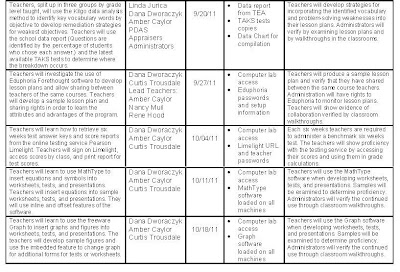Today I tried to attend my very first web conference. This conference is a requirement for my Instructional Leadership class. I decided to use my laptop instead of my desktop because of the built in camera. I found the website and signed in. I found one of my classmates from EA1188. Dr. Abernathy was beginning to add those with cameras and microphones. As she was adding people to the session, the sound started to get a little spotty. The website kicked me out to the previous screen and I had to get permission to rejoin. I was reading the chat and asking questions and things seemed to be going fine. Dr. Abernathy had decided to stop adding people because we were getting too many. Then, my laptop started to shut down so that it could do an update on Windows! By the time I got back to the website, I could not rejoin. I will check the script to see if any of my questions were answered in my absence. So my first web conference gets mixed reviews. The session was easy to navigate and participate but I didn't get to get everything that I wanted out of it this time.



